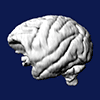-
-
sample data

|
-
-
-
sample data

|
-
sample publication

|
|
Motor projections to the basis pontis in rhesus monkey.
J Comp Neurol. 2004 Oct 18;478(3):248-68. Schmahmann JD, Rosene DL, Pandya DN.
Motor corticopontine studies suggest that the pons is topographically organized, but details remain unresolved. We used physiological mapping in rhesus monkey to define subregions in precentral motor cortex (M1), injected isotope tracers into M1 and the supplementary motor area (SMA), and studied projections to the basis pontis. Labeled fibers descend in the internal capsule (SMA in anterior limb and genu; M1 in posterior limb) and traverse the midsection of the cerebral peduncle, where SMA fibers are medial, and face, arm, and leg fibers are progressively lateral. Each motor region has unique terminations in the ipsilateral basis pontis and nucleus reticularis tegmenti pontis. Projections are topographically organized, preferentially in the caudal half of the pons, situated in close proximity to traversing corticofugal fibers. In nuclei that receive multiple inputs, terminations appear to interdigitate. Projections from the SMA-face region are most medial and include the median pontine nucleus. M1-face projections are also medial but are lateral to those from SMA-face. Hand projections are in medially placed curved lamellae in mid- and caudal pons. Dorsal trunk projections are in medial and ventral locations. Ventral trunk/hip projections encircle the peduncle in the caudal pons. Foot projections are heaviest caudally in laterally placed, curved lamellae. These results have relevance for anatomical clinical correlations in the human basis pontis. Furthermore, the dichotomy of motor-predominant caudal pons projections to cerebellar anterior lobe, contrasted with associative-predominant rostral pons projections to cerebellar posterior lobe, is consistent with new hypotheses regarding the cerebellar contribution to motor activity and cognitive processing.
Neuroanatomical Connectivity References
|
|

